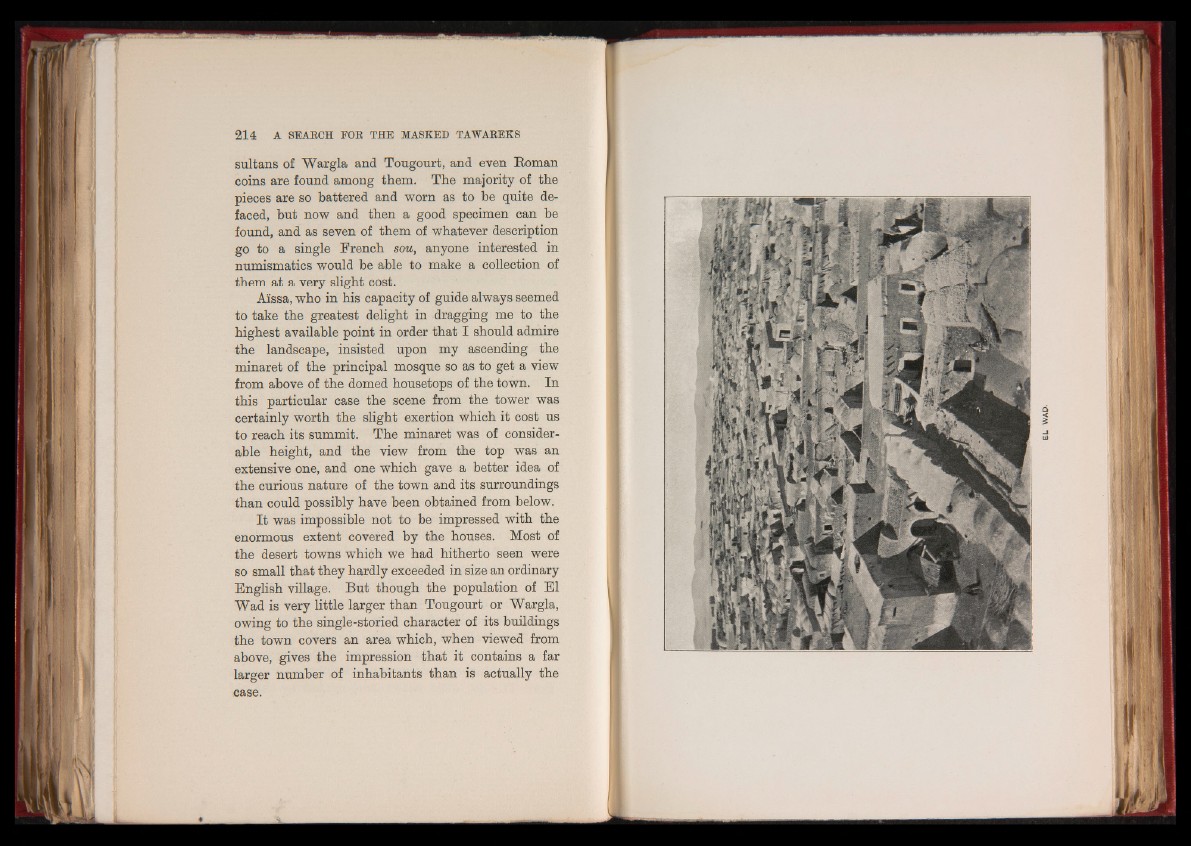
sultans of Wargla and Tougourt, and even Roman
coins are found among them. The majority of the
pieces are so battered and worn as to be quite defaced,
but now and then a good specimen can be
found, and as seven of them of whatever description
go to a single French sou, anyone interested in
numismatics would be able to make a collection of
them at a very slight cost.
Alssa, who in his capacity of guide always seemed
to take the greatest delight in dragging me to the
highest available point in order that I should admire
the landscape, insisted upon my ascending the
minaret of the principal mosque so as to get a view
from above of the domed housetops of the town. In
this particular case the scene from the tower was
certainly worth the slight exertion which it cost us
to reach its summit. The minaret was of considerable
height, and the view from the top was an
extensive one, and one which gave a better idea of
the curious nature of the town and its surroundings
than could possibly have been obtained from below.
It was impossible not to be impressed with the
enormous extent covered by the houses. Most of
the desert towns which we had hitherto seen were
so small that they hardly exceeded in size an ordinary
English village. But though the population of El
Wad is very little larger than Tougourt or Wargla,
owing to the single-storied character of its buildings
the town covers an area which, when viewed from
above, gives the impression that it contains a far
larger number of inhabitants than is actually the
case.